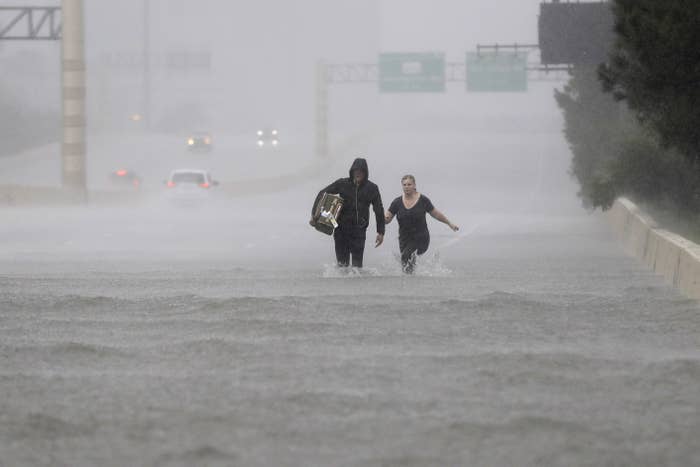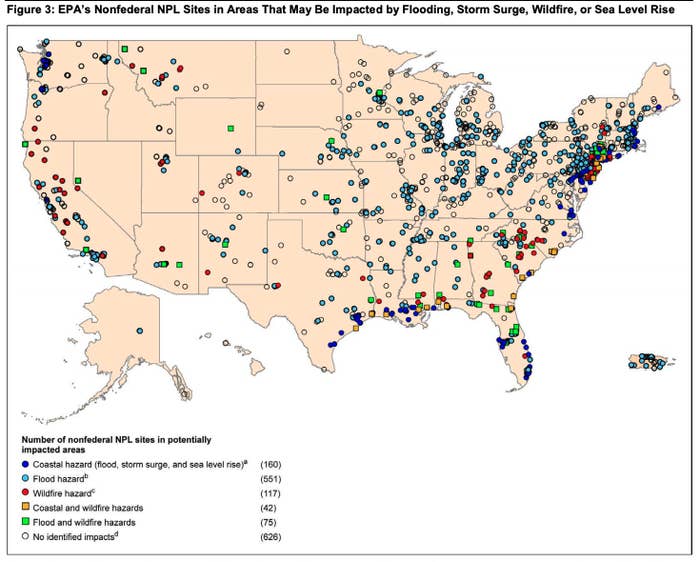
More than 900 toxic waste sites in the United States are in areas at risk of climate disasters, a new government analysis found, raising concerns about the potential spread of dangerous contaminants.
The report, released by the Government Accountability Office on Monday, also argued that the Environmental Protection Agency, which is tasked with overseeing the cleanup of these sites, should be doing more to protect them against climate hazards.
After Hurricane Harvey dropped record levels of rain on the Houston area, resulting in one especially toxic site in the city springing a leak, the GAO agreed to investigate how vulnerable other toxic sites across the nation are to extreme weather.
“We can no longer ignore the fact that the climate crisis is here and it’s in our backyard,” Sen. Kamala Harris, a California Democrat and one of the members of Congress that pushed GAO to investigate the issue, said in a statement emailed to BuzzFeed News. “This report underscores that protecting our communities requires us to demand that the EPA incorporates climate change into its cleanup plans for current and future Superfund sites.”
Using federal climate data, the GAO has analyzed potential risks posed to 1,571 toxic zones, called Superfund sites, located across the US and its territories. The government watchdog group’s analysis found 945 of the sites, or about 60%, were at risk of at least one of the following hazards: wildfires, flooding, storm surge, or sea level rise.
Climate-linked flooding poses the most widespread threat, imperiling more than 700 Superfund sites on the coast and in the middle of the country. According to the Fourth National Climate Assessment, climate change is already making storms wetter and more frequent, and rising seas have already contributed to an increase in flooding from high tides in certain communities.

The big concern is that climate disasters could damage the toxic waste sites “and lead to releases of contaminants that pose risks to human health and the environment,” according to the report. The EPA has identified more than 500 contaminants at Superfund sites, including arsenic, lead, and mercury.
There were some data limitations in the GAO’s analysis. For example, data on sea level rise was not available for Alaska, and wildfire data was not available outside the contiguous US. Also, the list of waste sites used for the report is slightly outdated; it includes some sites that the EPA has since determined are cleaned up. Superfund sites on federal land, such as military bases, were not considered.
As part of the report, the GAO made four recommendations for how the EPA could better take climate change into account in its Superfund site planning. The watchdog agency recommended the EPA finish standardizing how it determines the boundaries of the waste sites, which it has agreed to do.
The GAO also suggested that the EPA clarify how its actions to manage potential climate impacts align with the agency’s current goals, and provide more direction on how to better calculate climate risks and response plans. The EPA disagreed with these three recommendations, arguing its existing procedures were adequate.
UPDATE
This story was updated to include a comment from Sen. Kamala Harris.
